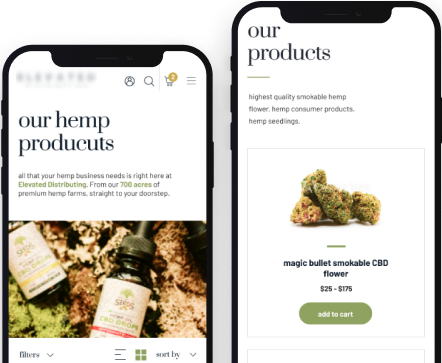A case for digital transformation in the healthcare sector
Healthcare service delivery is moving gradually from a provider-centric model to a patient-centric and outcome-focused model. Digital healthcare services are transitioning from a complementary role to taking center stage, building differentiation and enabling new practices to emerge.
Uncertainty and rapid change in the environment have made it imperative for organizations across industry sectors to get ‘smarter,’ ‘faster,’ and more responsive to their users’ needs. Coupled with the need to reduce operational costs, improve access, and build competitive differentiation, providing a stellar stakeholder experience has become the cornerstone of all digital transformation initiatives. Investment in user experience is blooming for that specific reason. It offers healthcare organizations a way to stand apart and offer a differentiated experience to their stakeholders, ensuring their long-term success.
Let’s examine some of the areas where User Experience Design is making a difference in healthcare.
- Design of Embedded Interfaces
The sheer technical complexity of embedded interfaces in the healthcare space is mind-boggling. From devices in the ER to ICU and Operating theatres, providers have to grapple with ages-old interfaces that do not leverage technological advances. Rejuvenating these interfaces to provide decision support to the Providers when and where they need it is a big user experience challenge we must solve. - Telemedicine
Smartphones have made it possible for healthcare providers to deliver high-quality patient care across the globe with no geographical restrictions. Telemedicine has given patients and doctors the flexibility and freedom to take out time for hospital visits and routine follow-ups. With Telemedicine, even those in remote areas now have access to the best doctors and convenient and affordable care. While the COVID-19 crisis fuelled the rapid expansion of Telemedicine initiatives in 2020, the patient experience here continues to lag. It offers a tremendous opportunity for health systems and organizations to transform how medicine is practiced worldwide. - Mobile Health
With the rapid proliferation of smartphones worldwide, patients and providers can access all information on the go, when and where they need it. Patients can access and have control over their health information like never before. The move away from printed reports and prescriptions has never been as decisive as it was in 2020. As this trend accelerates and more computing power is available to all stakeholders, we expect more EMR features and functionalities to be available on mobile devices. A multitude of apps and personal health devices on smartphones are generating more insights about patient’s health in areas like fitness, chronic illness management, critical incidents, and self-care. - Cloud Access
Patient interactions with healthcare facilities are increasingly happening through mobile devices, creating the need to build secure cloud-native application infrastructures that can scale on demand. Integrated CI/CD pipelines are making new apps deployed on the cloud platforms of choice easier and faster. Forms and paper charts are moving to a cloud-native model, enabling quick data sharing across multiple stakeholders, including hospitals, insurance companies, and doctors’ offices. - Wearables
A recent survey has indicated that the use of wearables has quadrupled in the last four years. Devices like pedometers and fitness trackers allow people to track their weight, pulse, and oxygen levels, and now mobile devices as small as a smartwatch can perform FDA-approved ECGs, DIY blood tests, or serve as a thermometer. This data can predict future risks, like heart disease, and make timely prevention possible using real-time links to doctors’ offices. User experience is again taking center stage in these initiatives, with doctors and patients using the data to get timely insights. - Artificial Intelligence And Big Data
Huge volumes of data are collected daily in the healthcare sector, including data from EHRs, medical imaging, genomic sequencing, drug research, medical devices, and more. Data analytics allows hospitals and caregivers to reduce overall costs and still deliver high-quality patient care.
Genetic medicine uses the power of big data to solve cancer problems. It rapidly evaluates terabytes of data in minutes and deciphers vital insights that lead to timely detection and gauging of treatment efficacy.
The introduction of AI and ML technologies to the healthcare space has enabled deeper and more meaningful insights to deliver measurable improvements in the quality of care. Some applications that have proven to be highly successful are predictive analysis for disease prevention, leveraging data mining for better diagnosis, precision medicine, driving research and drug discovery, and identifying disease trends and health strategies based on demographics. The role of AI in predicting deterioration in conditions like Sepsis is already making waves in some of the world’s biggest hospitals.
User experience design significantly impacts the efficacy of these systems. The new breed of applications makes it easier to consume the underlying technology with greater impact. - IoT
Hospitals now use the Internet of Things, or IoT as it’s commonly referred to, to track medical equipment like wheelchairs, defibrillators, nebulizers, oxygen pumps, and other monitoring equipment. IoT-enabled hygiene monitoring devices track infections and help prevent patients from getting infected. The challenge here is to deliver a user experience that analyses the data generated by IoT devices to unravel patterns and enable users to make intelligent decisions.
- The providers are rapidly upgrading their systems to reduce and manage the caseload.
- There has been an increase in AI and robots’ use for delivering prescriptions, food, and other hygiene essentials.
- The demand for mobile applications to track and monitor patient data has flourished as well, triggering a frenzy of innovative application experiences to come to the market.
- Digitization of end-to-end supply chain management to ensure transparency and continuity is also witnessing a steep rise in upstream patient-care demands.
As more patients look for safe in-person services, healthcare organizations must try new measures to differentiate themselves and make their services and experiences more patient-centric, addressing their users’ unique needs. They know that if their users can’t access it, there is no point in having a digital touchpoint in the first place.
Leading organizations are using patient journey mapping and using a range of initiatives to stay ahead:
- Improved Operations
Healthcare facilities are redesigning and revamping their existing operations to deliver a multidimensional user experience. AI, IoT applications and devices, connected systems, and robots are already improving the quality of care. These systems will help accelerate revenue cycles and manage risks, ensuring improved patient outcomes. - Leveraging Data Insights For Better Outcomes
The way data is collected, stored, and analyzed can profoundly impact customer experience. Data analytics can be used to predict when a patient may fall sick, take preventive measures, limit the spread of diseases, and create personalized plans for patients. Implementing artificial intelligence and machine learning to Big Data can help scour huge amounts of data to enhance the patient experience. It allows for a comprehensive view of each patient, reducing the time they spend giving information before the visit. - The Omni-Experience
IDC defines the Omni experience as a blend of physical and digital interactive experiences to create an omnipresent and multidimensional ecosystem of an advanced hospital that reduces costs and improves response time. While healthcare facilities can benefit from this strategy by getting a competitive advantage, patients get the best health services and user experience across all touchpoints. - A Global Knowledge Base
Today, a patient with a disease or symptoms can walk into a healthcare facility and get a consult from the best physician in another part of the world. Telehealth has made this possible and helped increase the life expectancy of people worldwide. Knowledge expansion is only at its nascent stages, and with AI and ML technologies, the diagnosis time can be drastically improved. This knowledge base that goes beyond borders can reduce costs and improve productivity by providing immediate access to insights. With the customer experience prioritized, patients will benefit from an affordable care base, which smaller health facilities can also implement. - Patient Personalization
Today’s healthcare consumer is well informed and needs customized solutions to their health-related issues. They expect that their time is respected and not wasted in a series of transfers to different representatives. By implementing data insights, a personalized plan can be created for each patient, for instance, their preference of doctors, choice of remote or in-person visits, their health history, and prediction of potential risks and health issues.
Embracing the need to build better experiences for all stakeholders is key to the success of healthcare organizations. Integrating or modifying existing systems with automated tools and digital technology can efficiently resolve current and future healthcare challenges.
A strategy to navigate the challenges of the healthcare sector and be prepared for future disruptions can be summarized in the following approach:
- Resolve– Address the threats posed by different environmental or non-environmental triggers.
- Resilience– Prepare to survive financial and productivity challenges.
- Return– Getting back to operations without compromising patient care quality.
- Reimagination– Switch to modern technology solutions to present yourself as a flexible and quality care provider.
- Reform– Promptly change your policies according to government laws and mitigate the potential future crisis we are experiencing today.
It’s time for the entire healthcare community to adopt a new ideology to scale, pace, and address patients’ needs without compromising quality and safety. A consistent, seamless, and patient-centric design experience across all touchpoints will help deliver the ultimate goal of improved health outcomes.
Rejuvenating Healthcare User Experience
Discover transformative ways UX design is enhancing healthcare, prioritizing patient experiences and outcomes in the digital era.














